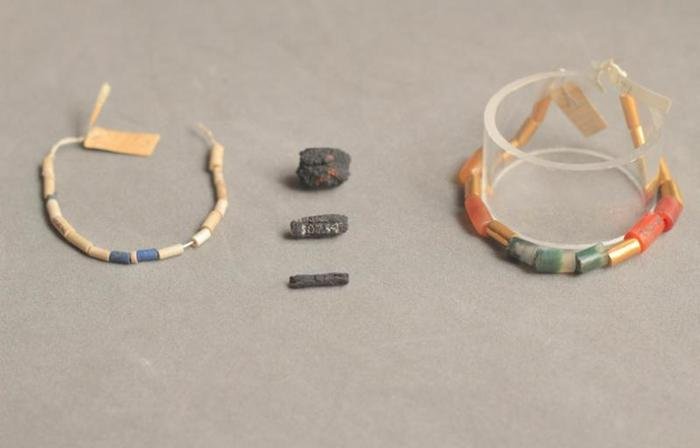Ancient Egyptian iron beads held in a British museum were hammered from pieces of meteorites, rather than iron ore. Credit: UCL Petrie Museum/Rob Eagle
LONDON, Aug. 20 (UPI) -- Some of the world's earliest known iron artifacts -- ancient Egyptian beads -- came from outer space and were hammered out of meteorites, archaeologists say.
The beads, in the collection of the Petrie Museum of University College London, were hammered from pieces of meteorites rather than iron ore and predate the emergence of iron smelting by 2,000 years, they said.
The nine beads, more than 5,000 years old, were carefully hammered into thin sheets before being rolled into tubes and strung into a necklace along with gold and gemstones.
This demonstrated the high value the ancient Egyptians placed on the exotic material, researchers said.
Excavated in 1911 near the village of el-Gerzeh in Lower Egypt, the beads were completely corroded when discovered, requiring X-ray methods to determine their meteoric origin.
The examination found high concentration of nickel, cobalt, phosphorus and germanium characteristics of meteoric iron without having to attempt invasive analysis which could potentially damage the rare objects.
University College London archaeologist Thilo Rehren said researchers were "excited to be able to see the internal structure of the beads, revealing how they were rolled and hammered into form.
Fourth-millennium B.C. metalworkers had mastered the smithing of meteoritic iron, an iron-nickel alloy much harder and more brittle than the more commonly worked copper, developing techniques that went on to define the iron age, the researchers said.
"This is very different technology from the usual stone bead drilling, and shows quite an advanced understanding of how the metal smiths worked this rather difficult material," Rehren said.















